From rare Sonderwunsch projects to one-off builds, discover some of the most exclusive and unique Porsche’s to ever leave Stuttgart.
Porsche‘s history of one-off builds and custom creations goes way back, long before personalization became a buzzword. Through its Sonderwunsch program and Exclusive Manufaktur division, Porsche’s been quietly building ultra-rare, highly personalized models for decades, often for collectors, celebrities, and motorsport royalty. Whether it was a unique windshield wiper setup on a 356 B for Alfried Krupp or a fully street-legal 917 racecar for Mansour Ojjeh, Porsche’s always had a soft spot for turning oddball requests into reality. These aren’t your average special editions either, as we’re talking about full custom interiors, wild color combos, and even full-body redesigns, all done with factory-level attention.
Things really picked up in the ’80s and ’90s, when wealthy clients pushed the limits of what Porsche could do. Hi-fi systems, pastel interiors, and hand-painted finishes started showing up more often, setting the stage for today’s full-blown one-off builds. With the revived Sonderwunsch program, customers now get to sit down with designers and engineers to create truly unique cars, from stitching, paint color, or even airbrush art on the body. It’s not a fast process, and it’s definitely not cheap, but for some, there’s nothing better than owning a Porsche no one else has. Whether it’s a modern Taycan or a vintage 928, these ultra-exclusive builds show what’s possible when creativity meets German precision.
356 B Carrera 2 – Rear Windshield Wiper (1968)

Industrialist Alfried Krupp von Bohlen und Halbach wasn’t willing to forgo this special request, an exotic feature at that time. His 356 A Coupé from 1955 had already been fitted with a rear windshield wiper just for him. But for his 356 B Carrera 2 from 1962, implementing this customer request proved to be extremely difficult, as the rear windshield was larger than that of the predecessor. A hole had to be drilled in the windshield to create space for the wiper and its motor. After multiple cracked windshields during installation, the Porsche mechanic was finally able to declare success.
911 2.0 – Rally Model (1968)

In 1968, this 911 was converted for the London–Sydney Marathon, which covered more than 16,000 kilometers through Europe, the Middle East, Asia, and Australia. The tailpipe was extended to roof height for river crossings, while the spectacular tubular frame on the outside offered protection from rollovers and collisions with wild animals. Support for motorsport drivers with a variety of projects, some of them quite unusual, was one of the many reasons for founding the customer racing department in 1973. A close connection between racing and customization still exists to this day.
917 “Kurzcheck” – Street Version (1975)
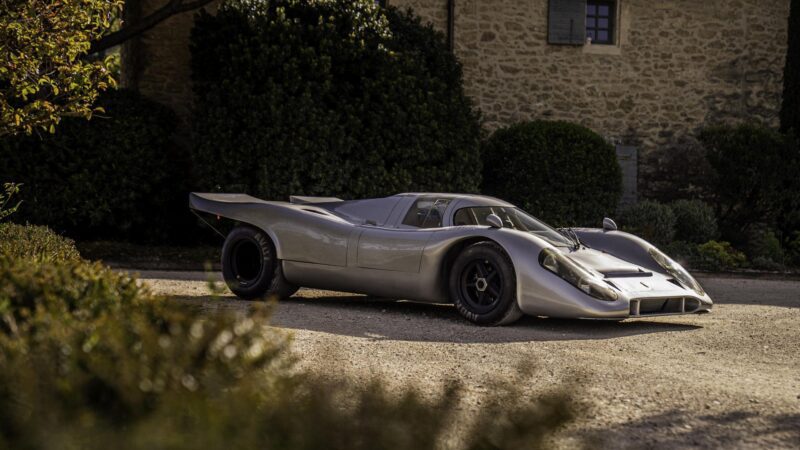
Converting a “Kurzheck” (short tail) 917 for operation on public roads was a unique challenge. The order came from spirits manufacturer Count Gregorio Rossi di Montelera of Italy, the main sponsor of Porsche Motorsport for many years. Fitted with exterior mirrors, turn signals, and a rear muffler, the race car was ultimately approved in the US state of Alabama, which also authorized operation in the Count’s chosen home of France. A second “917 Street” was presented to a German customer in 1977.
935 – “Street” (1983)
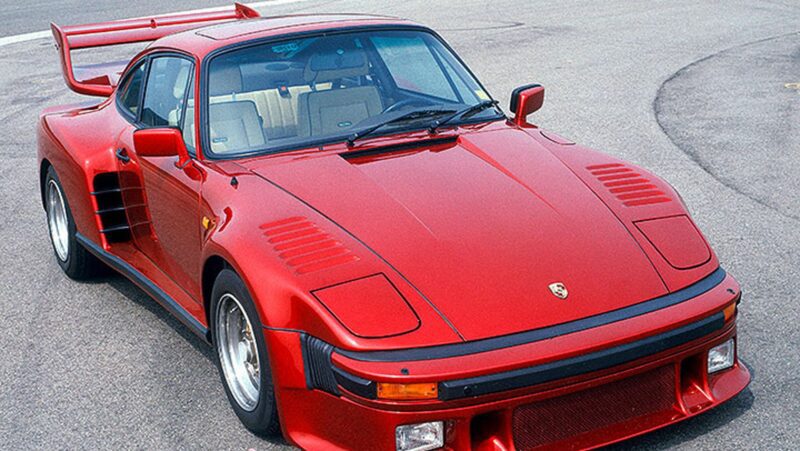
Almost no other one-off created by the Porsche Sonderwunsch department has captured the spirit of the times quite like the conversion of the 911 Turbo to the 935 race car for Saudi Arabian businessman Mansour Ojjeh, who submitted the order for an extensive Formula 1 engine project (TAG turbo produced by Porsche). With a Flachbau body, a leather interior in Creme Caramel, a paint job in Candy Apple, and wood paneling, the 935 “Street” became a symbol of the 1980s. The resulting small series led to the founding of Porsche Exclusive in 1986, known as Porsche Exclusive Manufaktur since 2017.
959 (1989)
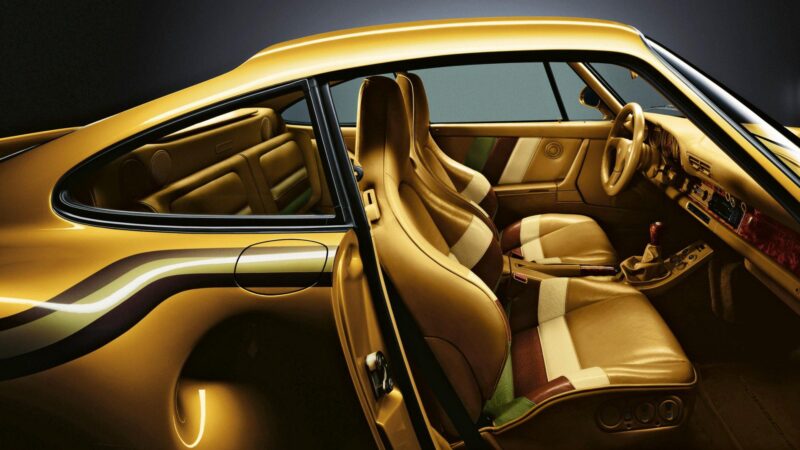
A small series of seven Porsche 959 vehicles produced for a member of the ruling family of Qatar is still unique to this day. A color concept with stripes was developed for these in collaboration with Porsche designers in Weissach. Custom colors like Sahara Beige, Royal Blue, and Silk Green were combined with correspondingly colored buffalo leather interiors featuring stripes. The exhaust tailpipe plated in 24-karat gold was yet another exquisite customer request. Rather than the traditional Porsche emblem, the new owner’s golden family crest adorns the hood, hub cover, and interior.
911 GT2 (993) – Coppa Florio (1997)
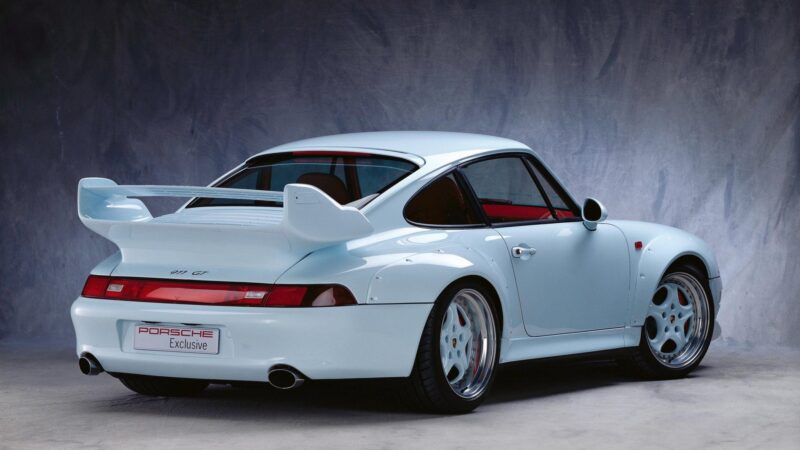
With just 193 units produced in total, a 911 GT2 based on generation 993 is a rare sight as it is. But this GT2 customized on behalf of a customer is one of a kind – in part because it’s the only one to feature the light-blue shade Coppa Florio (code 360). And then there’s the rims of the Speedline wheels painted in the same color and the consistently defined full-leather interior. The interior and cockpit are finished in special leather in Can Can Red throughout, which includes the ignition switch rosette, light switch, radio, rearview mirror, and round instruments.
911 Turbo Cabriolet (996) (2004)

The purpose of the “most personal car” initiative introduced in 2004 was to promote the customizations at Porsche on a global scale. One of the most spectacular examples was when furniture designer and architect Carlo Rampazzi was presented with the 911 Turbo Cabriolet (996) of his dreams – with the identical shade of orange both outside and in the interior. The inspiration was a porcelain plate, a color sample not all that unusual considering that Exclusive consultants had once been given the painted panel of a kitchen door as a reference. To this day, the sky’s the limit when it comes to the customer’s choice of color.
Panamera – Exclusive Series (2014)
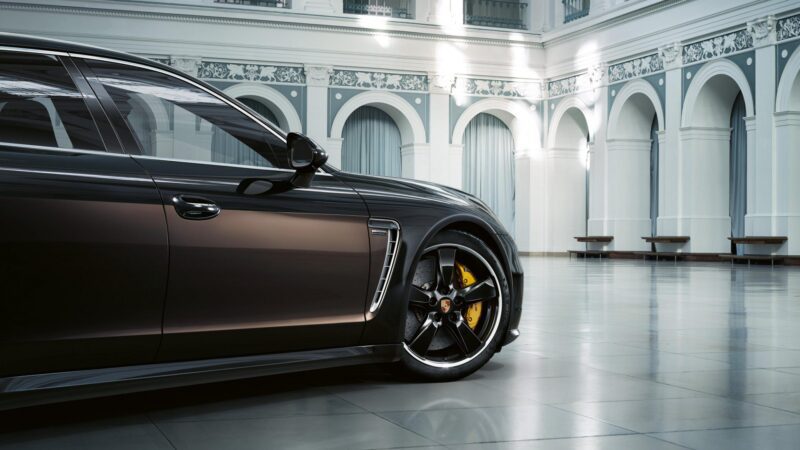
Exclusive Manufaktur enhanced a small series of 100 vehicles based on the Panamera Turbo S, which was presented at the Los Angeles Auto Show in 2014. For the first time, Porsche offered a two-tone gradient paint job, with Deep Black Metallic below the door handles contrasting with a Chestnut Brown Metallic that darkens toward the back. Each vehicle was painted by hand to achieve a harmonious color gradient. The seats and other interior surfaces were upholstered in Italian Poltrona Frau leather in the color Agatha Chestnut Brown. The Rear Seat Entertainment System Plus featuring integrated camera and DVD player also made its debut.
911 Sport Classic & 911 Classic Club Coupé (1999-2022)
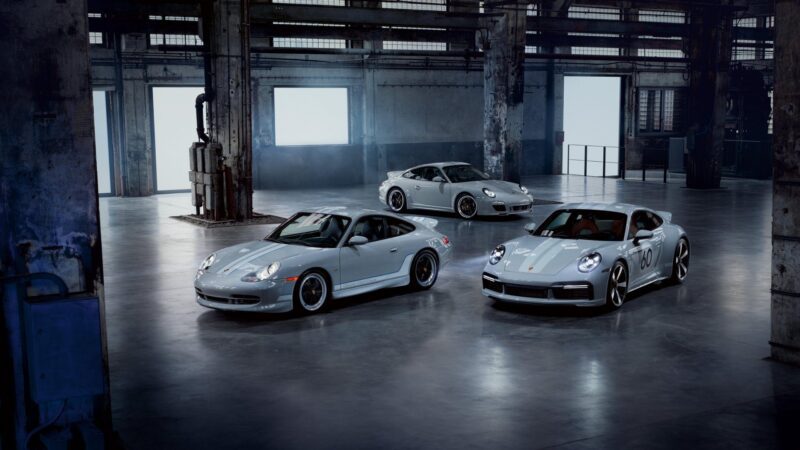
With the small series of the 911 Sport Classic (992, right), limited to 1,250 vehicles, Porsche Exclusive Manufaktur introduced the second of a total of four collector’s variants from the Heritage Design Edition. Popular design elements, colors, and materials from the 1960s and early 1970s were reinterpreted in this 911. The original 911 and the 911 Carrera RS 2.7 (1972) provided visual inspiration for the 2022 variant, just as they had for its direct predecessor, the 911 Sport Classic based on type 997 (center of the image), which was unveiled in 2009 and limited to 250 vehicles. The 911 Classic Club Coupé, a one of a kind based on the 996 generation and part of the relaunched Sonderwunsch program, was manufactured on behalf of the Porsche Club of America and sold at auction. What the factory one-off has in common with the two Sport Classic models are the double-dome roof, the fixed rear spoiler in the style of the ducktail, and the double stripes that extend across the hood, roof, and rear spoiler.
Taycan Turbo S – “Ding Yi” (2023)
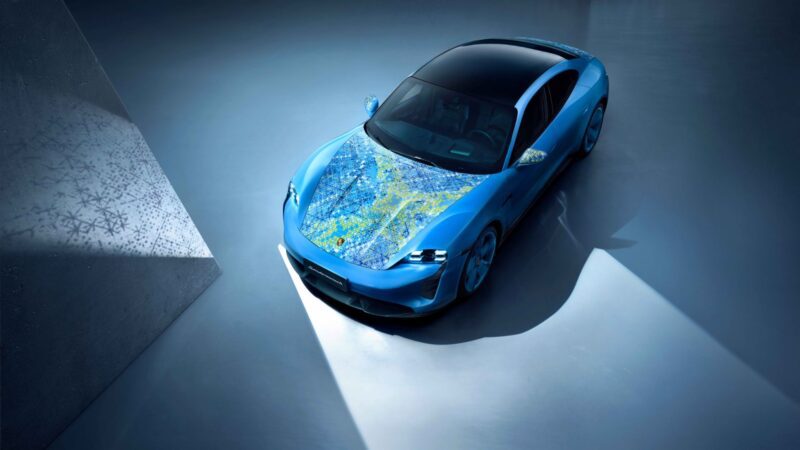
Yet another extraordinary, inspirational vehicle was created through the Sonderwunsch program in collaboration with Chinese artist Ding Yi. Inspired by his painting Appearance of Crosses 2022-2, sections of the image adorn the body and the interior. The application process was quite complicated and required precise masking techniques and innovative painting and printing processes. With the base color of deep blue and the integration of artistic elements, the sporty sedan combines aesthetics and technology. Ding Yi, a renowned representative of abstract contemporary art, would also like to use the Taycan Turbo S in Shanghai, the city he calls home.
928 S – “Boo” (2024)
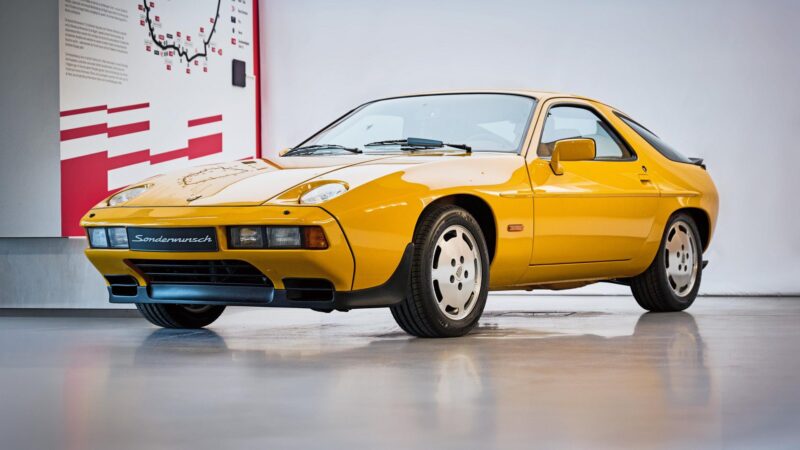
For singer-songwriter Álvaro Soler, the Sonderwunsch department refined a 928 S, built in 1981. The interior is dominated by leather in pampa brown, while the exterior shines in the customized color Soler Yellow Metallic. The sound system was developed in collaboration with the engineers from the Porsche Development Centre Weissach, perfectly matched to Soler’s seating position and taste – for a 360-degree sound experience. After completing the one-of-a-kind piece, the Sonderwunsch team surprised the musician with a highlight: a guitar painted in the color of the car, complete with a matching case – covered with the same leather as the vehicle interior.
Source: Porsche

